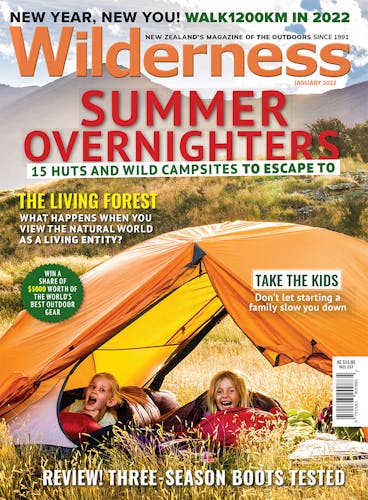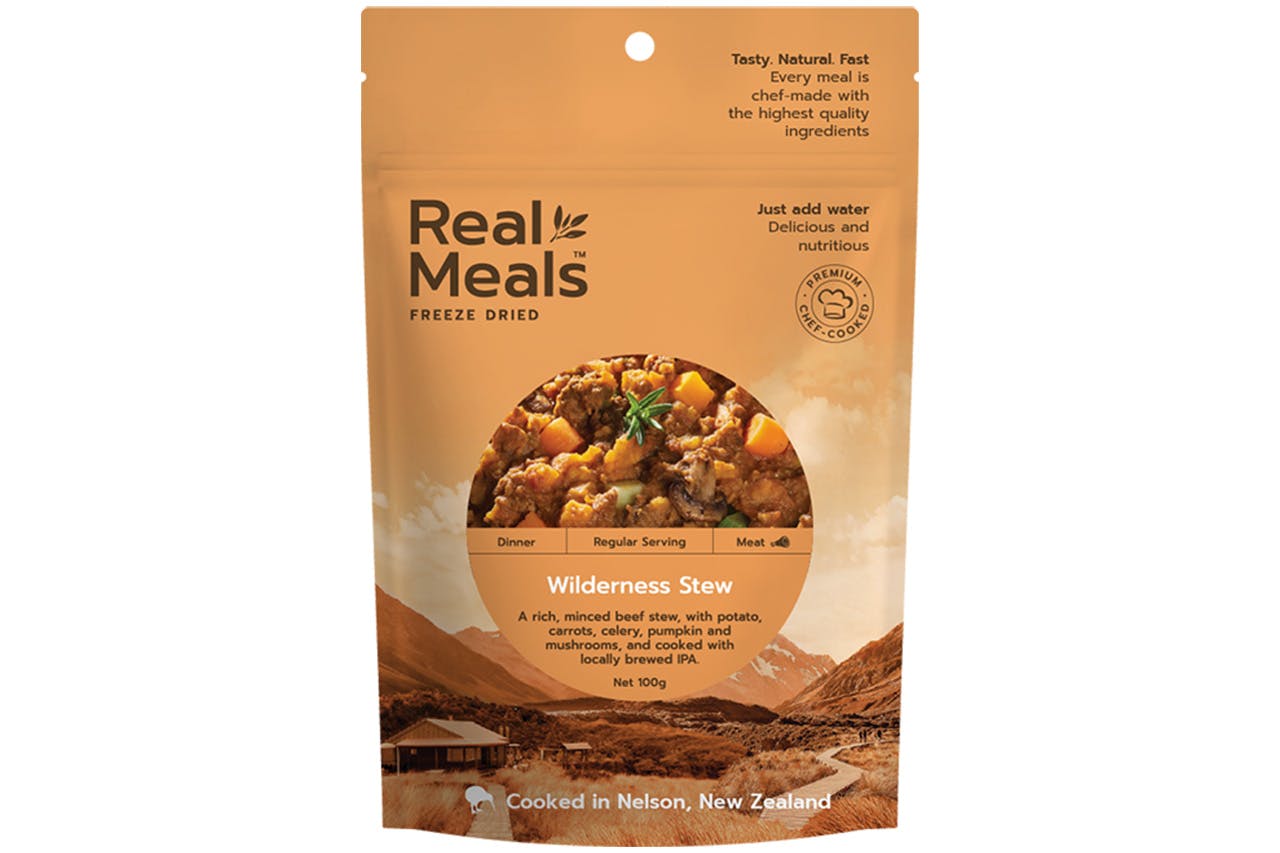Letter of the month
Reliving past trips
The ‘30th Anniversary Issue’ brought back tramping memories.
I recalled an exhausting tramp to Kapakapanui on which we almost succumbed to heatstroke; I remembered my late dad’s fondness for Cone Hut and my first multi-day tramp. My then-boyfriend planned a crossing for us that started at Field Hut and ended at Totara Flats a couple of days later.
We were both inexperienced and hadn’t been near the Tararua Peaks before. When we arrived at the chain ladder (it really was a chain ladder in 1980), we looked down it and agreed it was probably about three-metres long. I was terrified but agreed to go down first. To steady my nerves I decided to count the rungs! By the time I counted 70, I was too shocked to be frightened anymore.
We had a wonderful night at the gorgeous Maungahuka Hut and boasted later how we were among the few who had ‘pulled the chain’.
– Susan Bultitude, Porirua
– Susan wins a $100 voucher to spend on a selection of Real Meals freeze dried food at www.realmeals.co.nz. Readers, send your letter to the editor for a chance to win.
Cultural diversity matters
The letter ‘Cultural diversity’ suggested Wilderness should not “exercise your mind too much to right this apparent wrong” in regards to the lack of Māori in the outdoors.
As a Māori tramper, I’d like to maintain the challenge to Wilderness to continue to “right this wrong”. It matters.
I wonder how these folk, who said they had met just one Māori tramper in their years of tramping, discern a Māori tramper? Is it complexion? In the absence of Māori ritual and process, as is often the case, we don’t gather at the hut or campsite and mihimihi (meet and greet as per a Māori worldview), share our whakapapa (ancestral) links, or announce ourselves as Māori. I’m fair-haired, light-skinned and blue-eyed. Prior to receiving my moko kauae (chin moko) a year ago, complete strangers consistently and incorrectly interpreted my complexion as exclusively pākehā.
I recently tramped one of the Te Wāhi Pounamu-based Great Walks. During the evening hut talk, the Scottish DOC ranger enthused that his sense of belonging had been strengthened by the many Scottish names comprising the local, literal and linguistic landscapes. This made him feel at home.
Me, as tangata whenua and a Māori tramper, not so much.
And despite articulating awareness of the significance of the place to iwi as a traditional greenstone-gathering route, with no contemporary access granted to non-iwi, he wasn’t able to synthesize the why.
Why? Because there’s actually an entire chronicle of Ngāi Tahu naming history – a whakapapa – that’s not being acknowledged. Neither was it at the next hut by the DOC ranger proudly in his 20th year as a volunteer. Disappointing.
That Wilderness would even air the letter, an inaccurate blanket statement, disturbs me. It has implications. It silences. I have previously written for Wilderness and it’s worth noting that the articles have been shaped for a perspective that positions non-Māori at the fore. Māori worldview concepts are unpacked and explained in an elementary way for non-Māori digestion and open critique, for better or worse. But they were drafted by a Māori tramper.
Wilderness, you know we’re out there tramping because we’re courageously writing about it for your audience. So why not acknowledge us?
Front-facing DOC kaimahi (staff) can do much to help make the Māori tramping experience more visible and so can Wilderness.
In the case of Wilderness, my question is: are you willing to hold the space for this to happen in a way that acknowledges, maintains and protects the mana and resonance of Māori voices, the ‘change-makers’, that are bringing the diversity?
Some reassurances, please.
– Tania Rae (nee Gaffey)
– Wilderness is a magazine for all trampers and readers can expect to see continued efforts to ensure the magazine’s content reflects the diversity of people who go tramping. -AH
RE: ‘Cultural diversity’, the correspondents seem to come from one perspective. If you open your mind to different perspectives, you might say different things in regard to Māori in the tramping world.
You might say; I assumed everyone I met wasn’t Māori (except for one woman).
Or, due to colonisation, Māori don’t feel accepted or comfortable in the pākehā-dominated tramping clubs. Or, in a generalised way, due to the long term effects of colonisation, Māori have fewer resources, are more often concentrated on survival and don’t have the luxury of tramping.
You might think Māori do go tramping and bushwalking, but in their way and not the traditional pākehā way.
Saying Māori aren’t into tramping is an old fashioned, discriminatory view. We have to open our minds and try to see things from a wider perspective, otherwise nothing changes.
– Stephanie Drake-Brockman
Granddad would have been impressed
I was delighted to read Tarsh Turner’s article ‘A Grave Adventure’ replicating my grandfather’s 1905-1906 exploration of Joes River and the North Branch of the Clinton River, between Te Anau and Milford Sound.
Turner mentions being inspired to undertake the trip by William Grave’s first-hand accounts of the expedition. She didn’t reference the source of those accounts, so for those wishing to learn more about this expedition and other of Grave’s Fiordland explorations, I refer them to the book Beyond the Southern Lakes, Explorations of W.G Grave, Reed Publishing, by Anita Crozier, Grave’s daughter.
While this was first published in 1950 and reprinted in 1974, the second edition has new material and has been significantly enhanced with the assistance of Graham Langton.
With a sense of history, Turner has provided us with a vivid account of the delights and trials of tramping in this part of the world; I am sure WG would have been impressed.
– Michael Crozier








